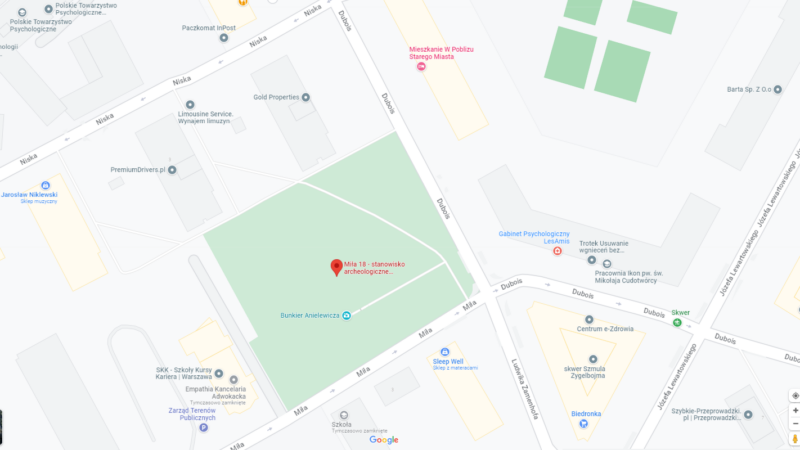Archaeological excavations at the site of the former Warsaw ghetto | Video
The archaeological excavation site, which you can visit every day from Tuesday to Sunday from 12 pm to 5 pm, is located at Miła 2 (former Miła 18), at the intersection of today’s Miła and Dubois streets, in the immediate vicinity of Anielewicz Bunker. Here is our video-summary of the archaeological excavations conducted in the Warsaw district of Muranów by the Warsaw Ghetto Museum last summer.
This round of archeological research started on June 7, 2022. It took place at the site of the former Warsaw Ghetto and was run by the Warsaw Ghetto Museum together with a research team from Christopher Newport University and the Aleksandr Gieysztor Academy in Pułtusk (a department of Vistula University). This time the works were focused in the area around Miła, Dubois, Niska and Karmelicka streets in the Warsaw district of Muranów, next to the so-called Anielewicz Bunker.
The Anielewicz Bunker (Miła street, 18) was a shelter situated at the corner of Miła and Dubois streets in Warsaw. The fighters of The Jewish Combat Organization were hiding there after long and exhausting battles in the Warsaw Ghetto Uprising. On May 8, 1943 they were captured by the Germans. With no way out, left without arms and not willing to surrender, they committed mass suicide together with their leader Modrechaj Anielewicz. After the war, by the initiative of the Central Committee of Polish Jews, the monument now called ‘Anielewicz Mound’ was made of the rubble of Miła houses. A commemorative stone was placed on the top of it.
During the excavations lots of fascinating objects were found, including a tefillin used by religious Jews, fragments of Jewish prayer books, Polish fiction books and cups for ritual hand washing. These finds may play an important role in teaching about Ghetto history in the future. It can also deepen our understanding about the Warsaw Ghetto Uprising.
The film features the Warsaw Ghetto Museum’s Albert Stankowski, excavations director dr Jacek Konik, archaeologists Bożena Józefów-Czerwińska and Władysław Duczko, the WGM scientific expert rabbi David Berman, the WGM educator and tour guide Masza Makarowa, volunteers Maria Lekukh and Monika Nestorowicz and conservator Rajmund Gazda.


